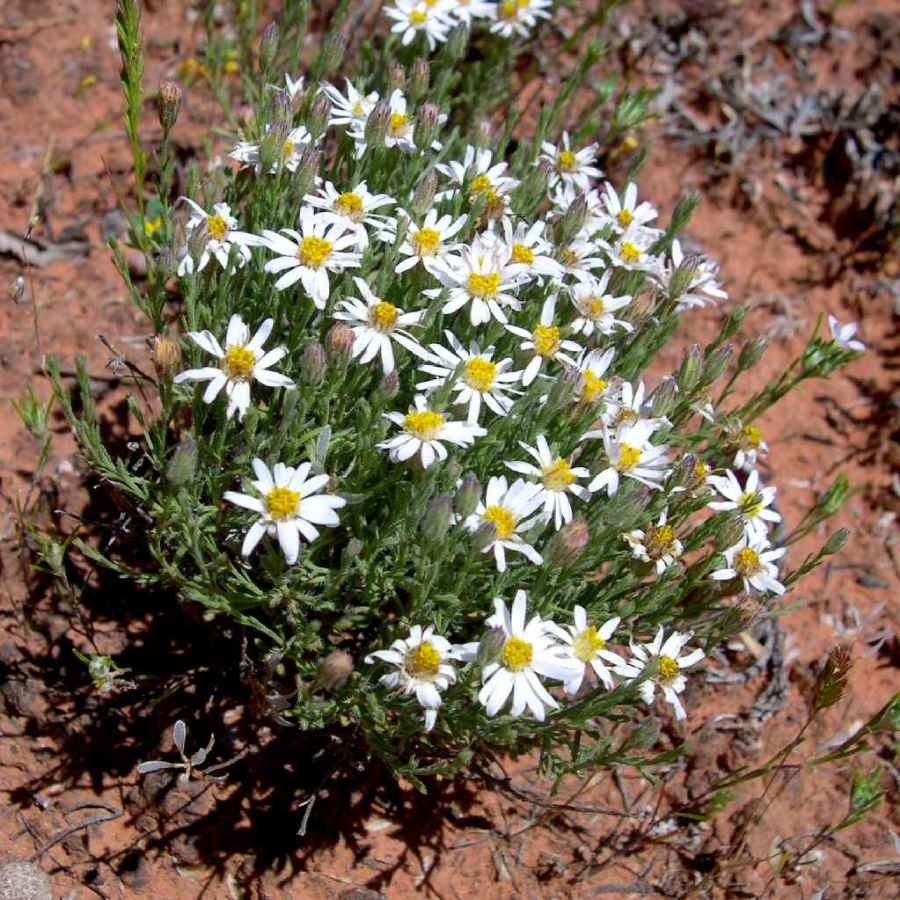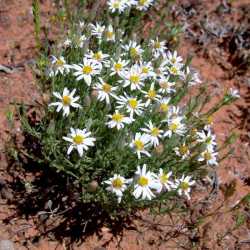Annuals or perennials, 5-30 cm (sometimes glandular); taprooted or rhizomatous. Stems erect or decumbent, branched, strigose to hispido-pilose. Leaves basal (sometimes withering by flowering) and cauline; alternate; sessile or petiolate; blades 1-nerved, linear to oblanceolate-obovate or spatulate, margins entire, faces glabrous, strigose, hispidulous, or hispido-pilose, sometimes stipitate-glandular. Heads radiate, borne singly (terminal, not crowded). Involucres cylindro-turbinate to hemispheric, (3.8-6.5 ×) 2-10 mm. Phyllaries 10-50 in 2-6 series, midnerves not evident or indurate, elliptic to linear-lanceolate, unequal, margins prominently whitish-scarious, faces strigose to glabrate. Receptacles flat or slightly convex, smooth, epaleate. Ray florets 6-24(-30), pistillate, fertile; corollas usually white, sometimes bluish, usually maturing or drying blue or purple (coiling at maturity). Disc florets 5-25, bisexual and fertile or functionally staminate; corollas yellow, tubes much shorter than tubular-funnelform throats, lobes 5, erect, deltate; style-branch appendages broadly to narrowly triangular. Cypselae cylindric to narrowly obovoid, terete to compressed, 2-5-, 8-, or 10-nerved, faces strigose, sometimes gland-dotted; pappi persistent, either in 1 series, of (20-)24-26(-30; usually multiples of 5) barbellate bristles, or hyaline crowns of basally fused scales, or minute, erose, sometimes cuplike crowns, or thickened rings, or in 2 series, outer of (4-)5(-8) minute or broad, white-hyaline or scarious, sometimes irregular scales plus inner of (4-)5(-8) alternating, tawny, sometimes thick, sometimes barbellate bristles. x = 8.
Chaetopappa is recognized by its entire leaves, unequal phyllaries with sharply delimited, whitish-scarious margins, and small heads with white or bluish coiling rays. The pappus varies among species: bristles, crowns of scales, combinations of bristles and scales, or essentially absent. G. S. Van Horn (1973) clarified distinctions between Chaetopappa and the essentially Californian Pentachaeta and maintained the two as separate genera. Chaetopappa elegans from New Mexico has been transferred to Ionactis (G. L. Nesom 1992), with the clarification of apparent inconsistencies in the base chromosome number of Chaetopappa.




